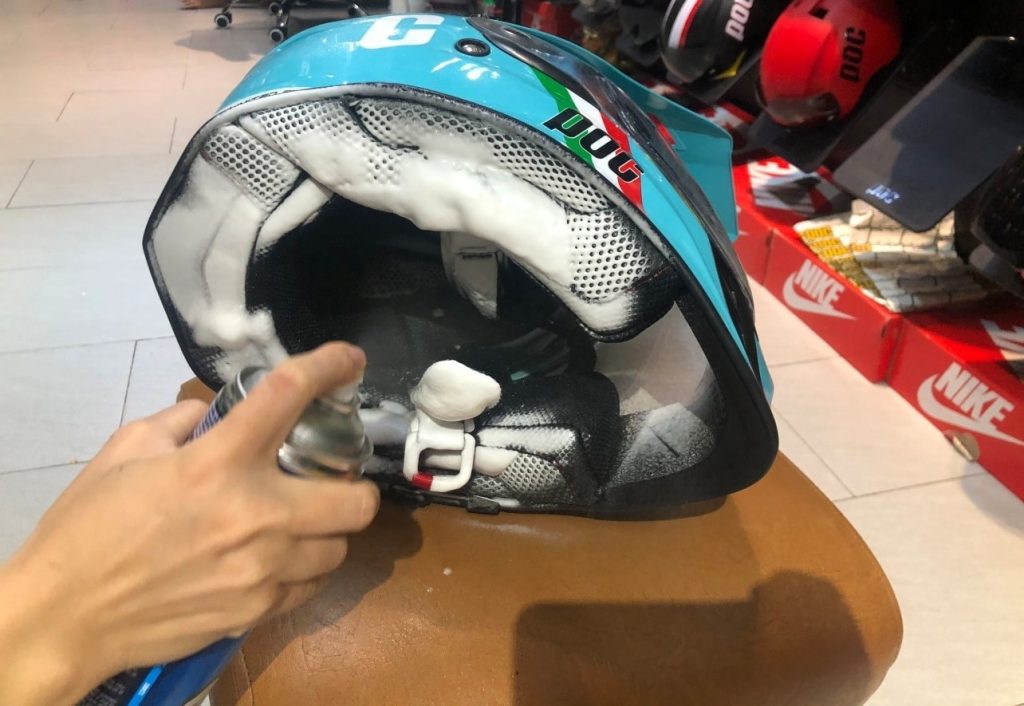A helmet is an indispensable piece of safety gear for riders, cyclists, and adventurers. Over time, your helmet can accumulate dirt, sweat, and grime, which not only affects its appearance but may also compromise its functionality and lifespan. Proper maintenance and cleaning are crucial to ensure your helmet remains effective and comfortable for years to come. In this guide, we’ll share essential tips for maintaining and cleaning your helmet to keep it in top condition.
Why Helmet Maintenance is Important
Regular helmet maintenance ensures:
- Safety: A well-maintained helmet offers optimal protection in case of an accident.
- Comfort: Clean interiors prevent discomfort and irritation caused by sweat and dirt buildup.
- Durability: Proper care extends the lifespan of your helmet, saving you money in the long run.
- Hygiene: Cleaning eliminates bacteria and odors, keeping your helmet fresh.
Tools and Supplies You’ll Need
Before you begin cleaning your helmet, gather the following supplies:
- Mild soap or helmet-specific cleaner
- Microfiber cloths
- Soft-bristle brush or toothbrush
- Bucket of warm water
- Soft sponge
- Air compressor (optional)
- Antibacterial spray (optional)
Tip: Avoid Harsh Chemicals
Never use harsh cleaners, solvents, or abrasive materials, as these can damage the helmet’s shell and interior components.

Step-by-Step Guide to Cleaning Your Helmet
1. Check the Manufacturer’s Guidelines
Before starting, refer to the helmet’s user manual or manufacturer’s instructions. Some helmets have specific cleaning recommendations to prevent damage.
2. Remove Removable Parts
Most helmets have removable liners, pads, and visors. Carefully detach these components for a thorough cleaning. Take note of how they are attached so you can reassemble them easily later.
3. Clean the Exterior Shell
The outer shell is the most visible part of your helmet, often exposed to dirt, bugs, and debris. Here’s how to clean it:
- Use a damp microfiber cloth to wipe away loose dirt and debris.
- Dip a sponge in warm soapy water and gently clean the shell.
- For stubborn stains, use a soft-bristle brush to avoid scratching the surface.
- Rinse with clean water and dry with a soft cloth.
4. Clean the Interior Liner and Pads
The interior liner and pads absorb sweat and can harbor bacteria if not cleaned regularly:
- Wash removable liners and pads with mild soap and warm water.
- Rinse thoroughly to remove soap residue.
- Air-dry completely before reattaching them to the helmet. Avoid using a dryer or exposing them to direct sunlight, as this can damage the materials.
If the liners are non-removable:
- Use a damp cloth and mild soapy water to clean them gently.
- Pat dry with a towel and allow them to air-dry.
5. Clean the Visor or Face Shield
If your helmet has a visor or face shield, clean it carefully to maintain clear visibility:
- Rinse off loose debris with water.
- Use a microfiber cloth and mild soap to clean the surface.
- Avoid using abrasive cleaners that can scratch the visor.
- Dry with a soft, lint-free cloth.
6. Inspect and Lubricate Moving Parts
Check any moving parts, such as hinges or vents, for dirt and wear. Use a small amount of silicone-based lubricant to keep them functioning smoothly. Be careful not to over-lubricate, as excess grease can attract dirt.
7. Eliminate Odors
Persistent odors can develop over time. To address this:
- Spray the interior with an antibacterial or deodorizing spray designed for helmets.
- Place the helmet in a well-ventilated area to air out completely.
8. Reassemble the Helmet
Once all components are clean and dry, reassemble the helmet by reattaching the liners, pads, and visor. Ensure everything is securely in place before using the helmet.
Regular Maintenance Tips
1. Store Your Helmet Properly
- Keep your helmet in a cool, dry place away from direct sunlight and extreme temperatures.
- Use a helmet bag or cover to protect it from dust and scratches when not in use.
2. Inspect for Damage
Periodically check your helmet for cracks, dents, or other signs of damage. If you notice any structural issues, replace the helmet immediately, as it may no longer provide adequate protection.
3. Avoid Dropping Your Helmet
A helmet’s integrity can be compromised by impact, even if there are no visible signs of damage. Treat your helmet with care to ensure it remains effective.
4. Replace Worn-Out Parts
Over time, liners, pads, and visors may wear out. Many manufacturers offer replacement parts to keep your helmet functioning and feeling like new.
5. Follow a Cleaning Schedule
Set a regular cleaning schedule based on how often you use your helmet. For daily riders, cleaning every 1-2 weeks is recommended. Occasional users can clean their helmets monthly.

Common Mistakes to Avoid
- Using Harsh Chemicals: These can degrade the helmet’s materials.
- Skipping Regular Cleaning: Dirt and sweat buildup can lead to unpleasant odors and material degradation.
- Drying with Heat: High temperatures can warp or weaken the helmet.
- Neglecting Inspections: Small cracks or wear can compromise safety over time.
Conclusion
Maintaining and cleaning your helmet is essential for ensuring safety, comfort, and durability. By following the steps and tips outlined in this guide, you can keep your helmet in top condition and ready for every ride. Remember, a well-cared-for helmet not only protects you but also enhances your overall riding experience. Prioritize regular maintenance and enjoy the peace of mind that comes with knowing your gear is in excellent shape.


